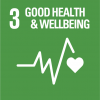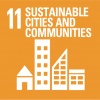This strategy includes commercial and residential construction, as well as public space design.
Incorporating energy efficiency principles into construction is a major step forward. However, we need to take it further by developing a holistic approach that considers the efficiency of resources through their life cycle.
When we think of sustainable buildings, the goal is to reduce the environmental impact by using efficient and renewable resources, to ensure quality while designing out waste and pollution.
European guidelines promote life cycle analysis for companies and the public administration (e.g. the Green Public Procurement criteria). According to the European Commission's Roadmap, it is possible to achieve a low-carbon competitive economy by 2050, provided that buildings achieve a 90% reduction in their greenhouse gas emissions.
On a national level, residential and commercial construction represented 8.5% of total emissions in 2018, contributing to an overall increase of emissions by + 1.9%.
Emissions from the construction industry can be significantly reduced by encouraging the use (and reuse) of low carbon-footprint materials.
Numerous reports highlight the benefits of using wood in construction, some of which are: time-efficiency, improved quality and design, reduced costs, and designing out waste and pollution.
Let's imagine our city in 2030. Let's answer the following challenges from that vision:
- How could the community contribute to increasing the city's resilience to tackle the climate change impacts?
- How to expand and improve the connectivity of green spaces?
- How to strengthen, conserve and restore biodiversity in the Soria urban environment?
- What incentive scheme could be applied to encourage citizens and construction companies to actively participate in a greener city?
- How to encourage the use of local resources and/or low carbon footprint materials in the city's built environment?








